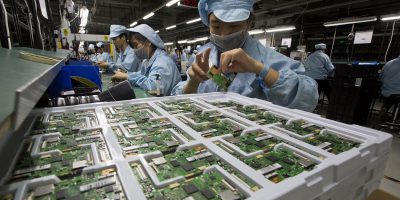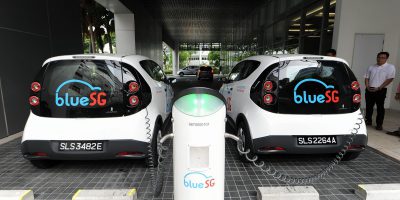
Singapore startup helps commercial establishments save on energy costs | Source: Pixabay
Startup uses data science to help buildings go green
DID you know that data analytics could be used to help companies go green and save on costs by consuming less energy? Well, it’s possible.
Analytics-driven solutions can help organizations maintain low temperatures within buildings and productions plants.
Using continuous optimization powered by cloud technology, these solutions deliver real-time insights and minute-level control for lower energy consumption and data-driven maintenance.
One firm that does this well is Singapore-based Barghest Building Performance (BBP), its CEO, Poyan Rajamand, told Tech Wire Asia:
“The solutions can be installed within any building management system, without implementation or operational risks, at no upfront cost to clients. Clients do not need to worry about capital expenditure or financial risk, and there is no operational risk as our built-in bypasses mean that a company can always revert to operating its existing cooling system as it does today.”
Shared savings scheme
“With the shared savings scheme we wanted to make the decision-making process as easy as we can for our clients,” said Rajamand.
BBP is paid through either a pre-agreed portion of the clients’ long-term energy savings or a fixed monthly payment. This is one of the most attractive features of BBP’s service.
The company knew that customer acquisition would be a challenge and one of the biggest hurdles to adopting the solutions, so they designed the shared savings arrangement. It allows customers to purchase the service without any upfront capital expenses.
“I do believe offering a shared savings arrangement has been instrumental in our ability to attract the number of clients that we have. However, shared savings is still a new concept for the industry, we anticipate it will take time to change people’s mindsets, and it needs the legal and procurement departments to come on board,” said Rajamand.
Average energy savings of 20-30 percent
The company provides its energy optimization services to companies in the Southeast Asia region, particularly in the hospitality, industrial, office and retail sectors.
After installation, the average energy savings from optimizing a company’s chiller plant ranges from 20 to 30 percent.
The potential for saving money is therefore huge, as in many cases, the cooling system accounts for about 60 percent of a building’s total energy costs given the humidity of Singapore.
Two of BBP’s projects have recently won awards:
- For Philips Lumileds (NEA award winner 2015), where BBP’s solution saves around 3,300,000 kWh annually.
- For RWS (NEA award winner 2017), where BBP’s solution saves 5,500,000 kWh annually.
In general, BBP can help companies located in a normal CBD office building save SGD100,000 (US$75,850) to SGD200,000 (US$151,700) annually.
For a shopping mall, the annual savings range from about SGD300,000 (US$227,500) to SGD500,000 (US$379,200).
Hotels typically save up to SGD700,000 (US$530,900) annually, while savings for industrial buildings can go up to SGD2 million (US$1.52 million).
Today’s buildings utilize a significant percentage of energy, while carbon dioxide emissions from buildings account for 30 to 40 percent of the total greenhouse gas emissions. The Singapore government and private companies around the world are constantly seeking new energy efficiency technologies to minimize the buildings’ environmental impact and related costs.
Building a cleantech startup
Getting the business up and running was the easy part. The hard part was making the sale to facilities management (FM) companies and teams.
“FM specialists often questioned BBP’s ability to install the solution without interrupting their operations, the ability of our system to achieve savings without risking their operational KPIs, and even the viability of our company to take on a long-term contract,” explained Rajamand.
It took BBP an entire year to secure their first client.
“Securing the first client and showcasing that our idea actually worked was a big breakthrough. Although the project was delayed and heavily over-budget, it showed that the idea and business model worked,” revealed Rajamand.
With that proof of concept in hand, the company raised seed funding and started their exciting journey.”
Since then, BBP has raised US$8.7 million from private investors and is planning to raise another SGD10 to SGD15 million (US$7.6 million to US$11.4 million) from institutional investors and corporate venture arms to fuel its growth.
Rajamand explained that government agencies have played a considerable role in the company’s success story.
“Help from different government agencies in product development and international expansion has helped BBP gain credibility in the market.”
READ MORE
- Ethical AI: The renewed importance of safeguarding data and customer privacy in Generative AI applications
- How Japan balances AI-driven opportunities with cybersecurity needs
- Deploying SASE: Benchmarking your approach
- Insurance everywhere all at once: the digital transformation of the APAC insurance industry
- Google parent Alphabet eyes HubSpot: A potential acquisition shaping the future of CRM










